May 2016 Prof. dr. Anton J.M. Loonen Circuits

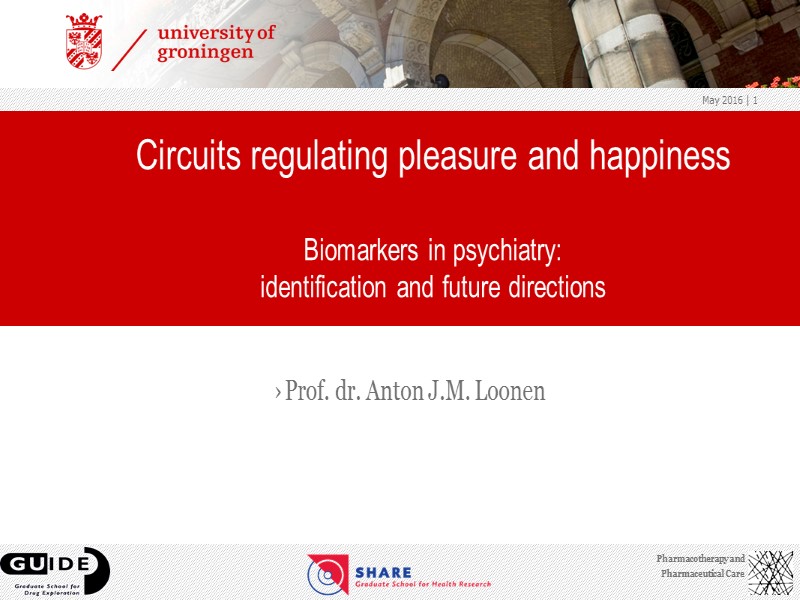
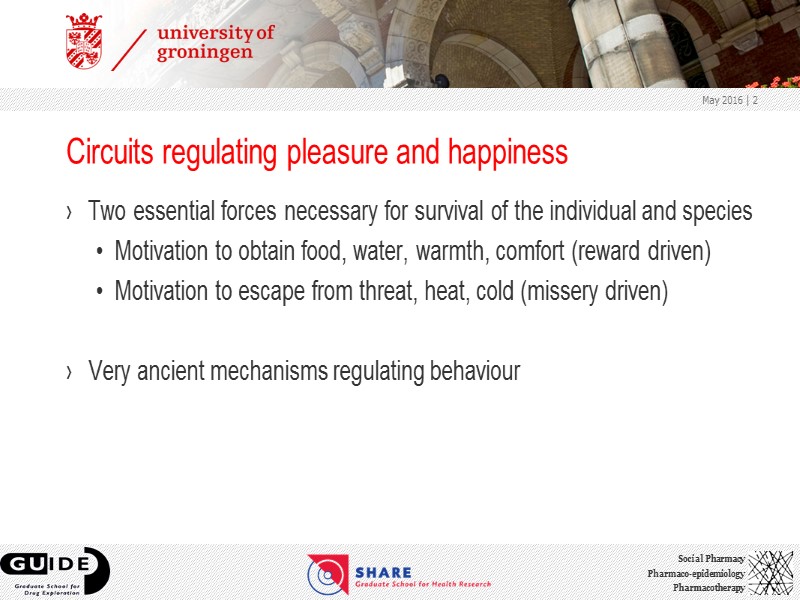
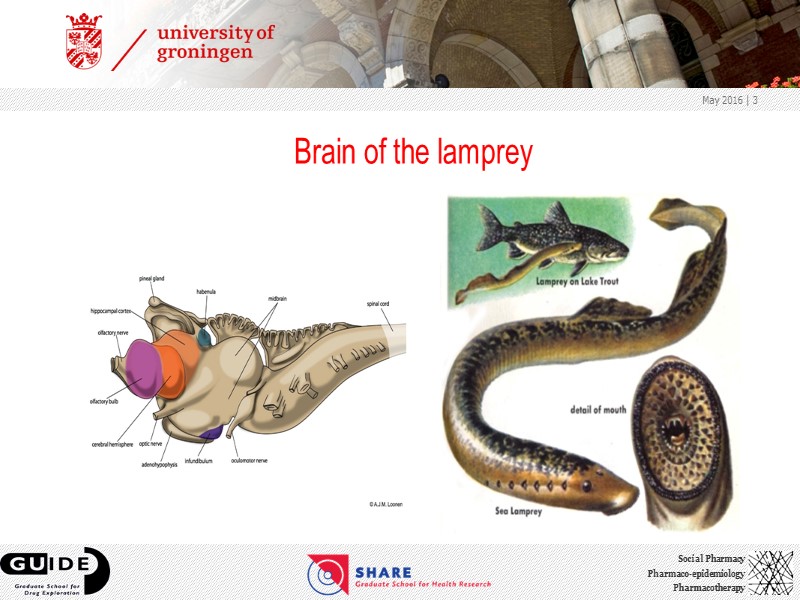
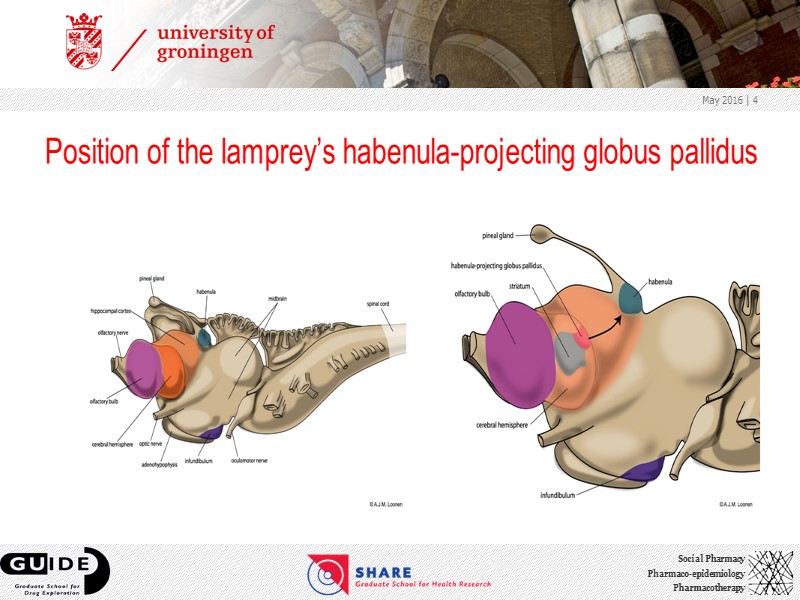
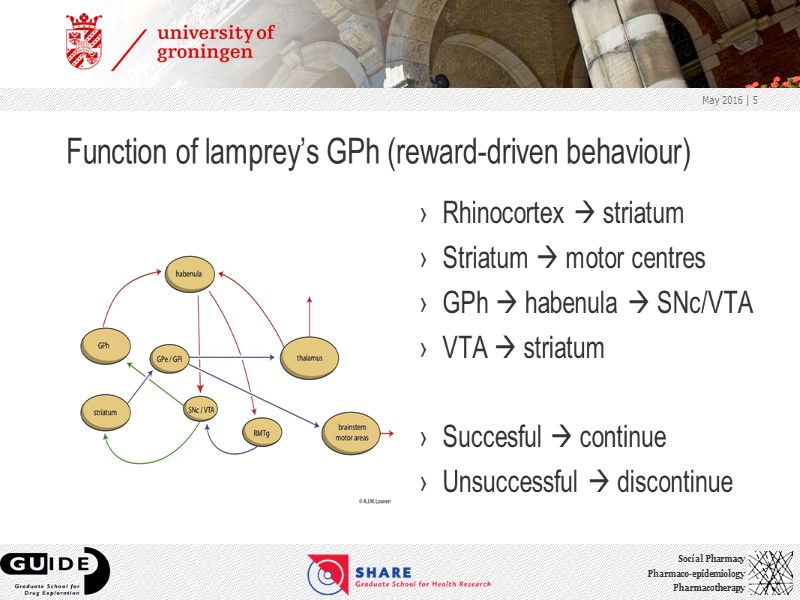
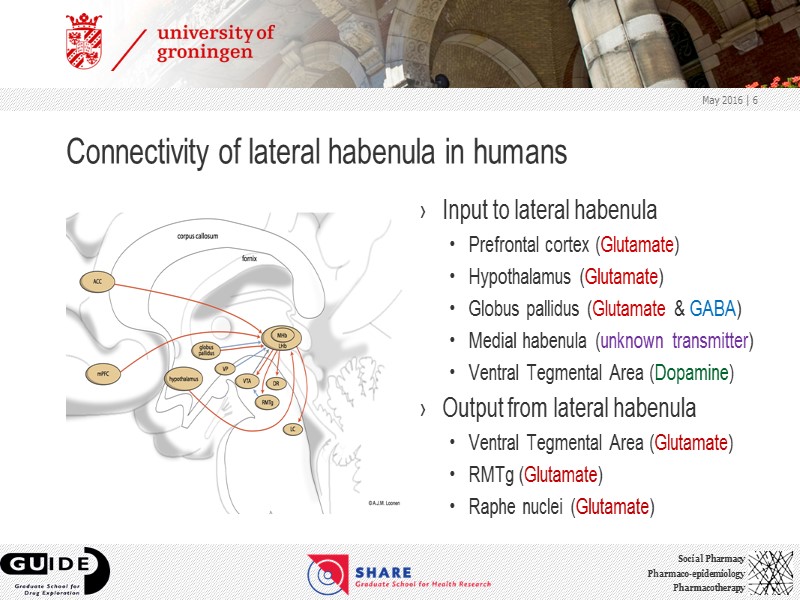
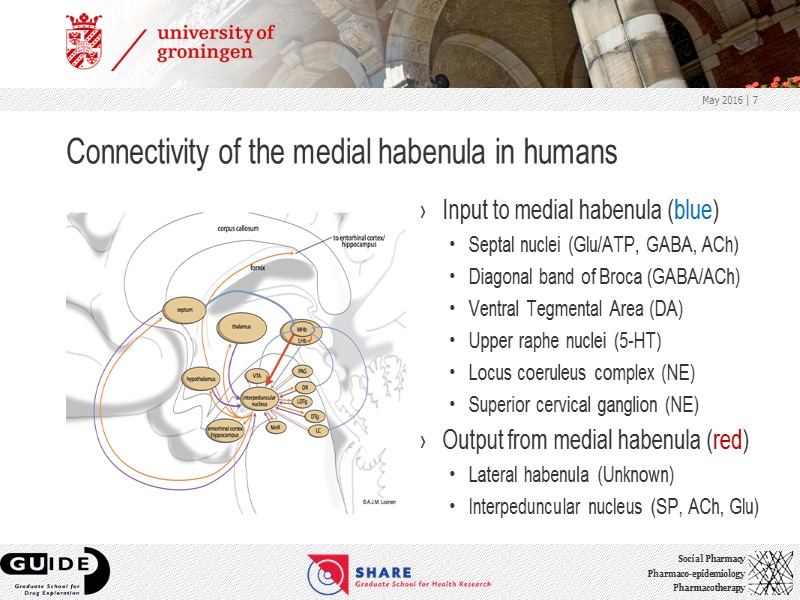
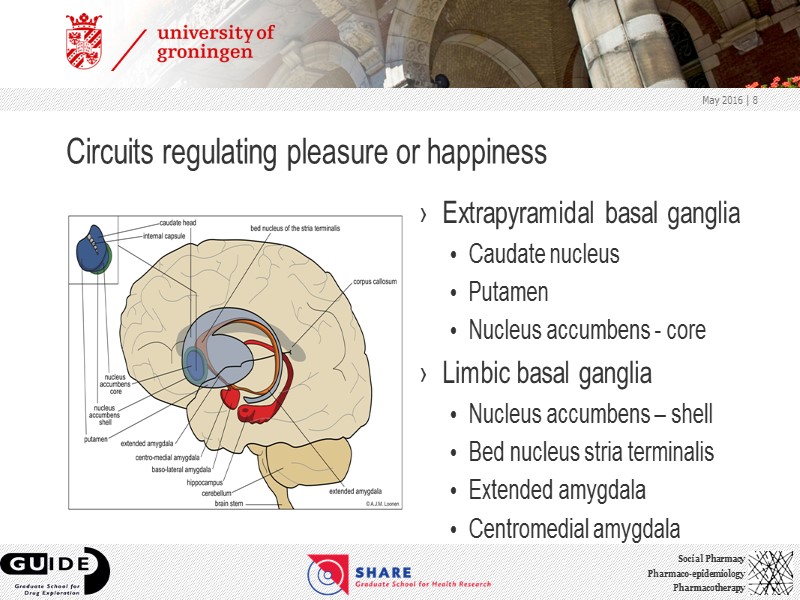
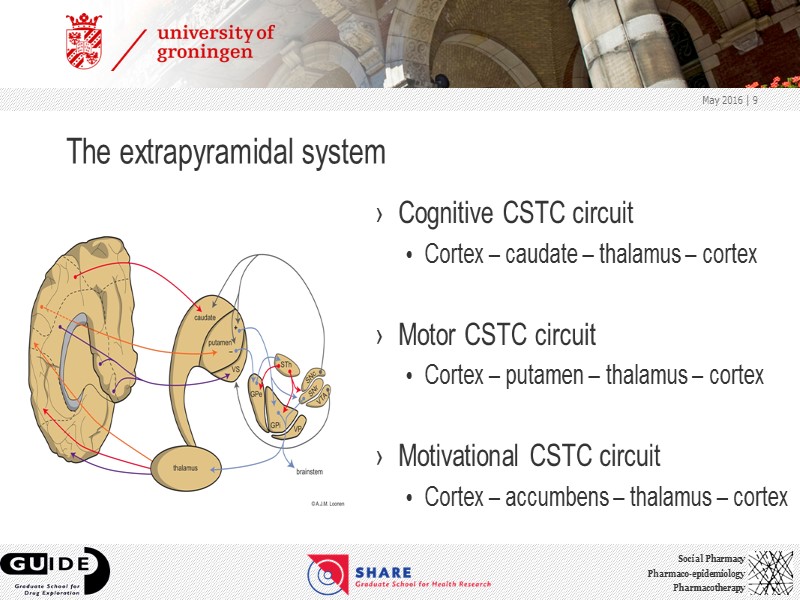
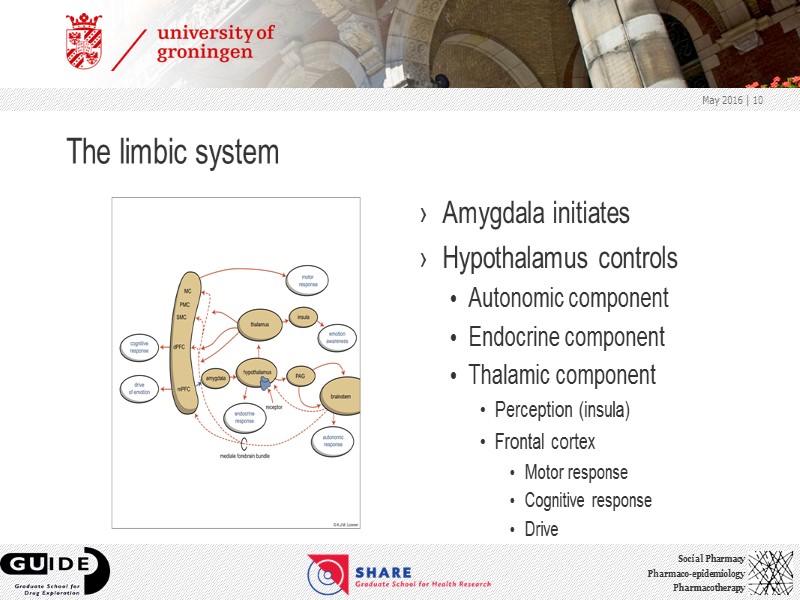
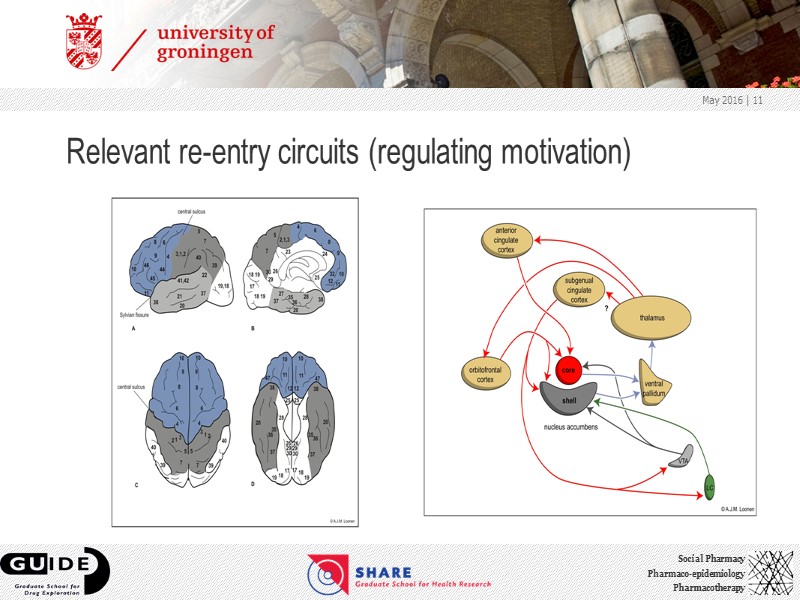
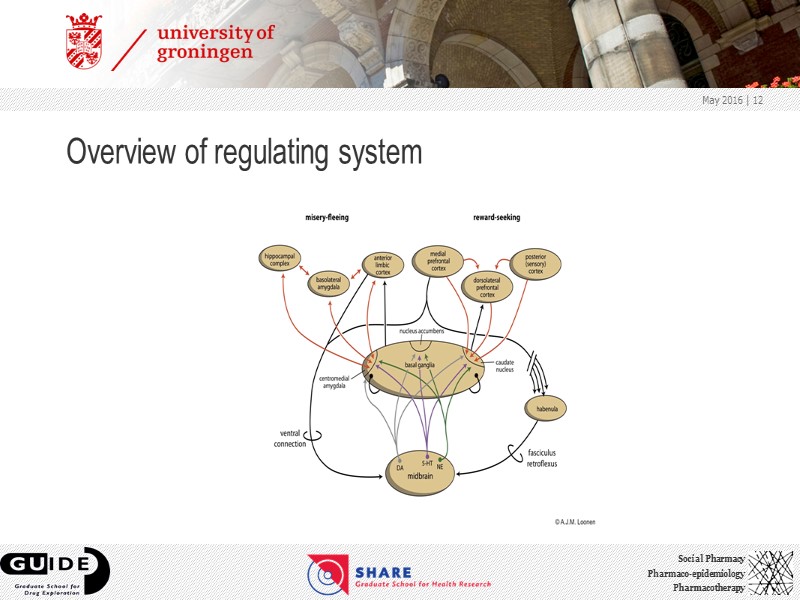
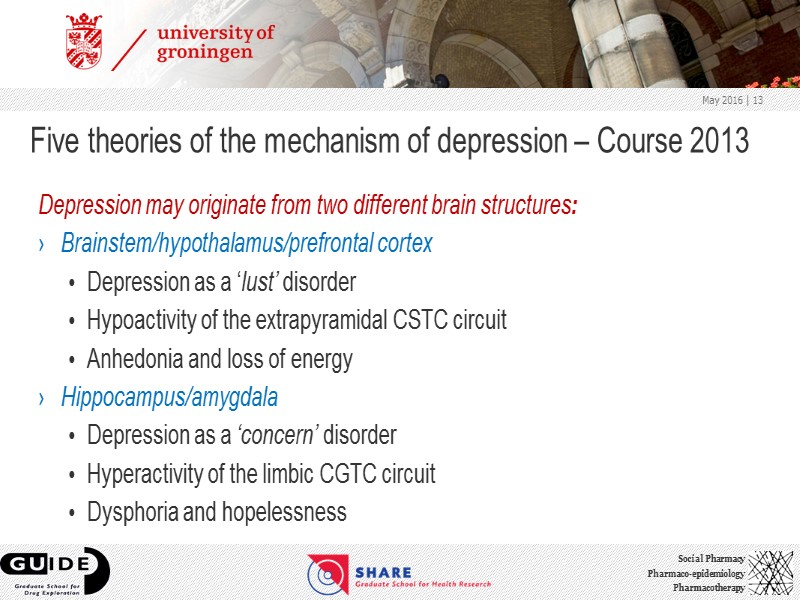
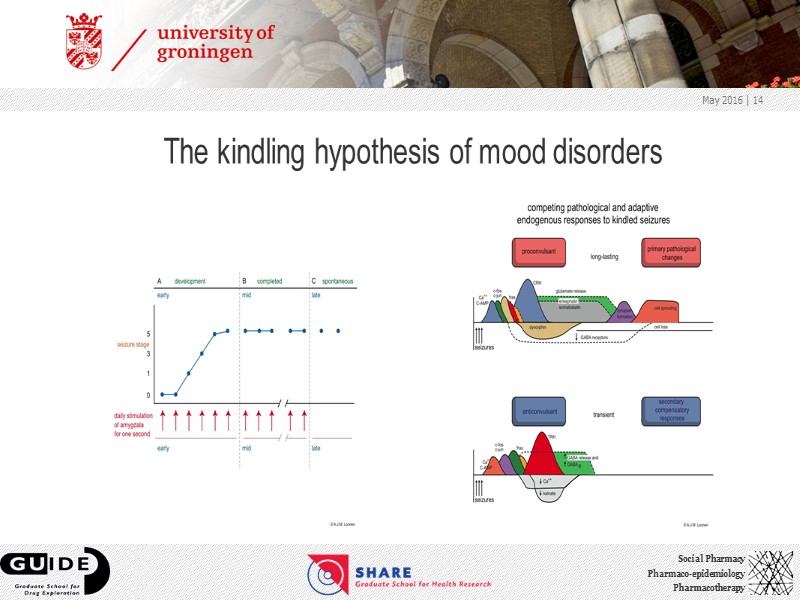
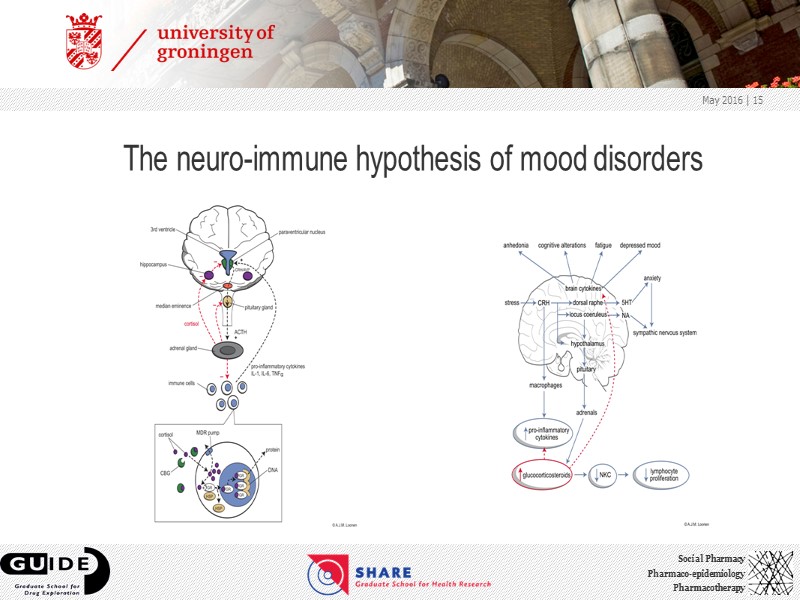
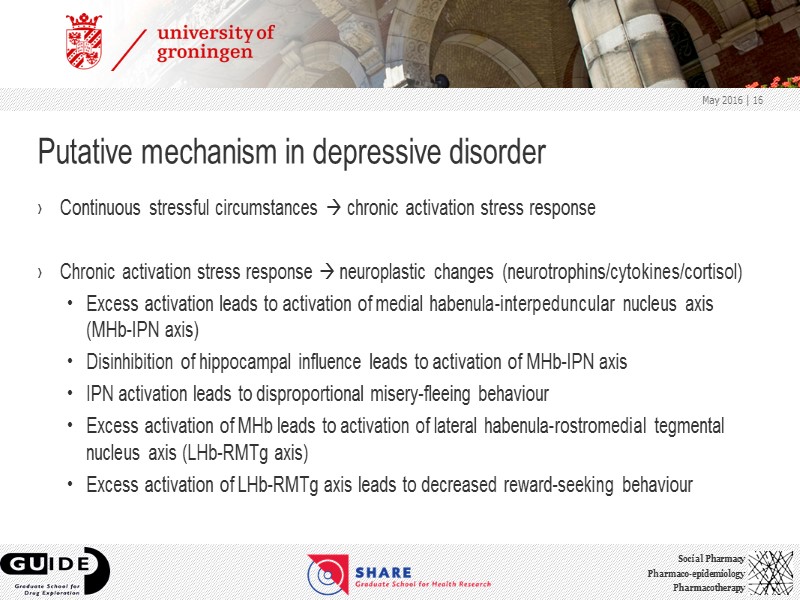
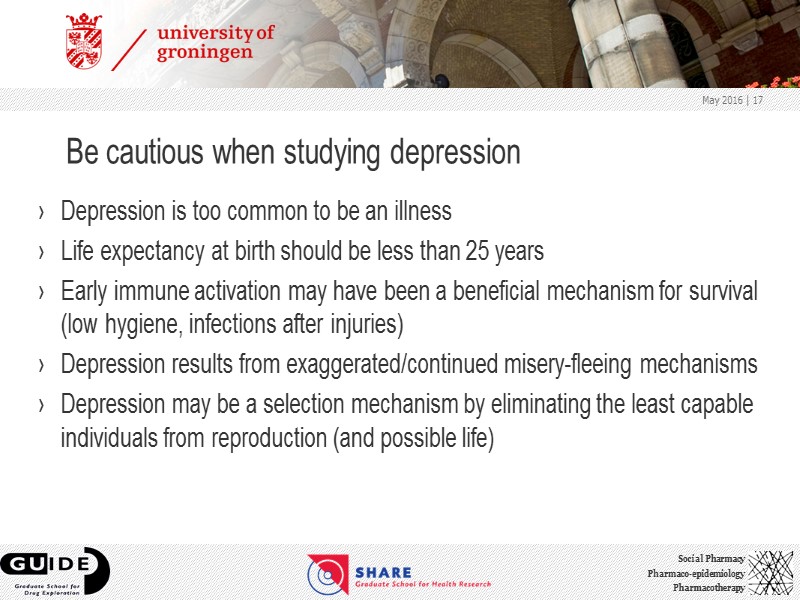
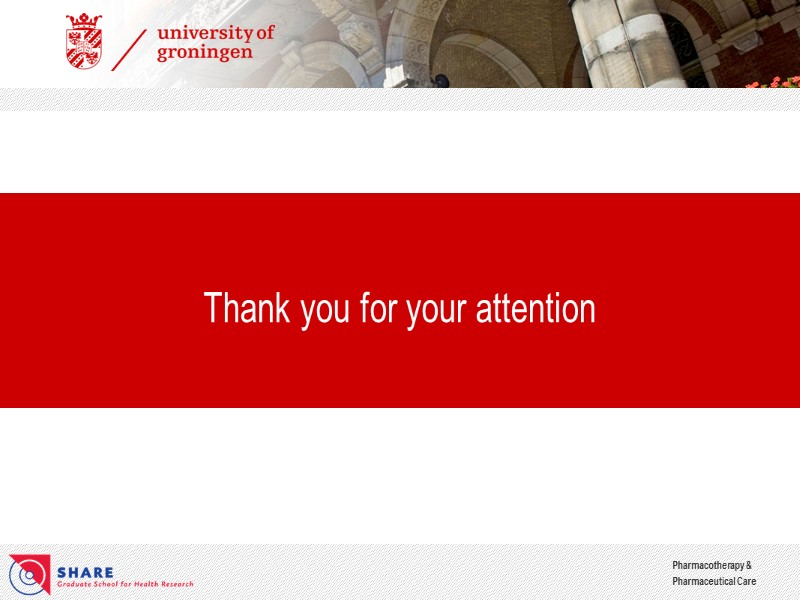
27294-prof._dr._anton_j.m._loonen_circuits_regulating_pleasure_and_happiness.ppt
- Количество слайдов: 18
 May 2016 Prof. dr. Anton J.M. Loonen Circuits regulating pleasure and happiness Biomarkers in psychiatry: identification and future directions | 1
May 2016 Prof. dr. Anton J.M. Loonen Circuits regulating pleasure and happiness Biomarkers in psychiatry: identification and future directions | 1
 Circuits regulating pleasure and happiness Two essential forces necessary for survival of the individual and species Motivation to obtain food, water, warmth, comfort (reward driven) Motivation to escape from threat, heat, cold (missery driven) Very ancient mechanisms regulating behaviour May 2016 | 2
Circuits regulating pleasure and happiness Two essential forces necessary for survival of the individual and species Motivation to obtain food, water, warmth, comfort (reward driven) Motivation to escape from threat, heat, cold (missery driven) Very ancient mechanisms regulating behaviour May 2016 | 2
 Brain of the lamprey May 2016 | 3
Brain of the lamprey May 2016 | 3
 Position of the lamprey’s habenula-projecting globus pallidus May 2016 | 4
Position of the lamprey’s habenula-projecting globus pallidus May 2016 | 4
 Function of lamprey’s GPh (reward-driven behaviour) Rhinocortex striatum Striatum motor centres GPh habenula SNc/VTA VTA striatum Succesful continue Unsuccessful discontinue May 2016 | 5
Function of lamprey’s GPh (reward-driven behaviour) Rhinocortex striatum Striatum motor centres GPh habenula SNc/VTA VTA striatum Succesful continue Unsuccessful discontinue May 2016 | 5
 Connectivity of lateral habenula in humans Input to lateral habenula Prefrontal cortex (Glutamate) Hypothalamus (Glutamate) Globus pallidus (Glutamate & GABA) Medial habenula (unknown transmitter) Ventral Tegmental Area (Dopamine) Output from lateral habenula Ventral Tegmental Area (Glutamate) RMTg (Glutamate) Raphe nuclei (Glutamate) May 2016 | 6
Connectivity of lateral habenula in humans Input to lateral habenula Prefrontal cortex (Glutamate) Hypothalamus (Glutamate) Globus pallidus (Glutamate & GABA) Medial habenula (unknown transmitter) Ventral Tegmental Area (Dopamine) Output from lateral habenula Ventral Tegmental Area (Glutamate) RMTg (Glutamate) Raphe nuclei (Glutamate) May 2016 | 6
 Connectivity of the medial habenula in humans Input to medial habenula (blue) Septal nuclei (Glu/ATP, GABA, ACh) Diagonal band of Broca (GABA/ACh) Ventral Tegmental Area (DA) Upper raphe nuclei (5-HT) Locus coeruleus complex (NE) Superior cervical ganglion (NE) Output from medial habenula (red) Lateral habenula (Unknown) Interpeduncular nucleus (SP, ACh, Glu) May 2016 | 7
Connectivity of the medial habenula in humans Input to medial habenula (blue) Septal nuclei (Glu/ATP, GABA, ACh) Diagonal band of Broca (GABA/ACh) Ventral Tegmental Area (DA) Upper raphe nuclei (5-HT) Locus coeruleus complex (NE) Superior cervical ganglion (NE) Output from medial habenula (red) Lateral habenula (Unknown) Interpeduncular nucleus (SP, ACh, Glu) May 2016 | 7
 Circuits regulating pleasure or happiness Extrapyramidal basal ganglia Caudate nucleus Putamen Nucleus accumbens - core Limbic basal ganglia Nucleus accumbens – shell Bed nucleus stria terminalis Extended amygdala Centromedial amygdala May 2016 | 8
Circuits regulating pleasure or happiness Extrapyramidal basal ganglia Caudate nucleus Putamen Nucleus accumbens - core Limbic basal ganglia Nucleus accumbens – shell Bed nucleus stria terminalis Extended amygdala Centromedial amygdala May 2016 | 8
 The extrapyramidal system Cognitive CSTC circuit Cortex – caudate – thalamus – cortex Motor CSTC circuit Cortex – putamen – thalamus – cortex Motivational CSTC circuit Cortex – accumbens – thalamus – cortex May 2016 | 9
The extrapyramidal system Cognitive CSTC circuit Cortex – caudate – thalamus – cortex Motor CSTC circuit Cortex – putamen – thalamus – cortex Motivational CSTC circuit Cortex – accumbens – thalamus – cortex May 2016 | 9
 The limbic system Amygdala initiates Hypothalamus controls Autonomic component Endocrine component Thalamic component Perception (insula) Frontal cortex Motor response Cognitive response Drive May 2016 | 10
The limbic system Amygdala initiates Hypothalamus controls Autonomic component Endocrine component Thalamic component Perception (insula) Frontal cortex Motor response Cognitive response Drive May 2016 | 10
 Relevant re-entry circuits (regulating motivation) May 2016 | 11
Relevant re-entry circuits (regulating motivation) May 2016 | 11
 Overview of regulating system May 2016 | 12
Overview of regulating system May 2016 | 12
 Five theories of the mechanism of depression – Course 2013 Depression may originate from two different brain structures: Brainstem/hypothalamus/prefrontal cortex Depression as a ‘lust’ disorder Hypoactivity of the extrapyramidal CSTC circuit Anhedonia and loss of energy Hippocampus/amygdala Depression as a ‘concern’ disorder Hyperactivity of the limbic CGTC circuit Dysphoria and hopelessness May 2016 | 13
Five theories of the mechanism of depression – Course 2013 Depression may originate from two different brain structures: Brainstem/hypothalamus/prefrontal cortex Depression as a ‘lust’ disorder Hypoactivity of the extrapyramidal CSTC circuit Anhedonia and loss of energy Hippocampus/amygdala Depression as a ‘concern’ disorder Hyperactivity of the limbic CGTC circuit Dysphoria and hopelessness May 2016 | 13
 The kindling hypothesis of mood disorders May 2016 | 14
The kindling hypothesis of mood disorders May 2016 | 14
 The neuro-immune hypothesis of mood disorders May 2016 | 15
The neuro-immune hypothesis of mood disorders May 2016 | 15
 Putative mechanism in depressive disorder Continuous stressful circumstances chronic activation stress response Chronic activation stress response neuroplastic changes (neurotrophins/cytokines/cortisol) Excess activation leads to activation of medial habenula-interpeduncular nucleus axis (MHb-IPN axis) Disinhibition of hippocampal influence leads to activation of MHb-IPN axis IPN activation leads to disproportional misery-fleeing behaviour Excess activation of MHb leads to activation of lateral habenula-rostromedial tegmental nucleus axis (LHb-RMTg axis) Excess activation of LHb-RMTg axis leads to decreased reward-seeking behaviour May 2016 | 16
Putative mechanism in depressive disorder Continuous stressful circumstances chronic activation stress response Chronic activation stress response neuroplastic changes (neurotrophins/cytokines/cortisol) Excess activation leads to activation of medial habenula-interpeduncular nucleus axis (MHb-IPN axis) Disinhibition of hippocampal influence leads to activation of MHb-IPN axis IPN activation leads to disproportional misery-fleeing behaviour Excess activation of MHb leads to activation of lateral habenula-rostromedial tegmental nucleus axis (LHb-RMTg axis) Excess activation of LHb-RMTg axis leads to decreased reward-seeking behaviour May 2016 | 16
 Be cautious when studying depression Depression is too common to be an illness Life expectancy at birth should be less than 25 years Early immune activation may have been a beneficial mechanism for survival (low hygiene, infections after injuries) Depression results from exaggerated/continued misery-fleeing mechanisms Depression may be a selection mechanism by eliminating the least capable individuals from reproduction (and possible life) May 2016 | 17
Be cautious when studying depression Depression is too common to be an illness Life expectancy at birth should be less than 25 years Early immune activation may have been a beneficial mechanism for survival (low hygiene, infections after injuries) Depression results from exaggerated/continued misery-fleeing mechanisms Depression may be a selection mechanism by eliminating the least capable individuals from reproduction (and possible life) May 2016 | 17
 Thank you for your attention
Thank you for your attention

